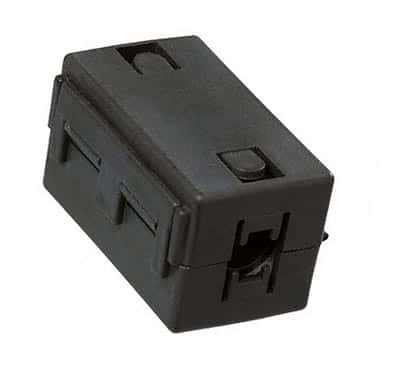Engineers have several methods of measuring currents flowing in circuits. The method depends on the magnitude of the current whose range can vary from a few pico-amperes to thousands of amperes.
Current flow in a circuit primarily causes two effects: voltage drop and magnetic field generation. Passage of electric current through a material produces a voltage drop. For most conductive materials, the voltage drop is proportional to the current and this remains true over a wide range. Therefore, by measuring the voltage drop, you can infer the current. This forms the basis of most resistive current sensing,
Engineers also measure current by the magnetic field it generates. The magnetic field generated is at right angles to the flow of current. Any magnetic material placed in the region will concentrate the field in itself depending on its permeability. The main advantage in magnetic current sensing is the isolation. No direct contact is necessary with the circuit carrying the current.
Using highly stable and linear resistors, which are available as standard circuit components, it is easy to measure current flow. The sense resistor is placed in series with the circuit in which the current is to be measured, causing a voltage drop. By using Ohm’s law, the current flowing is the ratio of the voltage drop to the resistance of the sense resistor.
How you measure the voltage drop across the sense resistor, depends on where the resistor is placed in the circuit. If one end of the sense resistor is on the ground side, which essentially means all the current through the sense resistor flows into the ground, the measurement is called low-side measurement. With high values of current, the ground voltage can vary considerably depending on where the measurement is made.
However, the sense resistor can be placed in the circuit such that there is non-zero voltage on both the ends of the resistor. Measuring in this way is called high-side measurement, and a special amplifier such as a differential amplifier is required for accurate readings. Both high-side and low-side resistive methods of measuring current have some drawbacks.
The presence of the sense resistor causes additional voltage drops in the circuit and may also introduce parasitic series or parallel resistance affecting the functioning of the circuit. Voltage drop across the sense resistor may also change its temperature, resulting in a drift in the reading with time.
Where safety is critical, especially in high voltage circuits, current flow in the circuit is measured by the magnetic field it generates. The major advantage in such measurements is the sensing circuit need have no direct electrical contact with the current being sensed.
The magnetic field generated by the current is distributed in free air and a magnetic sensor placed nearby will not give very reliable results. In actual practice, a magnetic toroid is placed around the circuit and this helps to concentrate the magnetic flux within itself. A magnetic sensor placed on the toroid will now sense the magnetic flux in the toroid and give more reliable readings.

